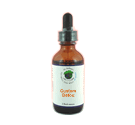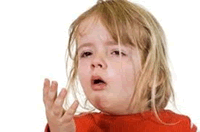|
|
Parainfluenza
HPIVs (human parainfluenza viruses) are spread person to person by direct contact with infected secretions through respiratory droplets or contaminated surfaces or objects. Infection can occur when infectious material contacts mucous membranes of the eyes, mouth, or nose, and possibly through the inhalation of droplets generated by a sneeze or cough. HPIVs can remain infectious in airborne droplets for over an hour. HPIVs are ubiquitous and infect most people during childhood. The highest rates of serious HPIV illnesses occur among young children. Serologic surveys have shown that 90-100% of children aged 5 years and older have antibodies to HPIV-3, and about 75% have antibodies to HPIV-1 and -2.
Human parainfluenza viruses (HPIVs) are common causes of respiratory tract disease in infants and young children. Each of the four HPIVs have different clinical and epidemiologic features. The most distinctive clinical feature of HPIV-1 and HPIV-2 is croup (i.e., laryngotracheobronchitis or swelling around the vocal chords and other parts of the upper and middle airway). HPIV-1 is the leading cause of croup in children, whereas HPIV-2 is less frequently detected.
HPIV-3 is more often associated with bronchiolitis (swelling of the small airways leading to the lungs) and pneumonia. HPIV-4 is rarely detected and is less likely to cause severe disease; but it may be more common than once thought.
HPIVs can cause repeated infections throughout life. Re-infections are usually manifested by an upper respiratory tract illness (e.g., a cold, sore throat). HPIVs can also cause serious lower respiratory tract disease with repeat infection (e.g., pneumonia, bronchitis, and bronchiolitis), especially among older adults and patients with compromised immune systems. The incubation period (time from exposure to the virus to onset of symptoms) for HPIVs generally ranges from 2 to 7 days.
|
|
| |
Parainfluenza Detox Remedy
Detoxification of all Parainfluenza and related species
$14.95
Read/Write Reviews
|
 Add
To Cart Add
To Cart |
 |
 |
Herpes Detox Remedy
Detoxification of all Herpes and related species
$14.95
|
 Add
To Cart Add
To Cart |
 |
 |
Influenza Detox Remedy
Detoxification of all Influenza and related species
$14.95
|
 Add
To Cart Add
To Cart |
 |
 |
Mumps Detox Remedy
Detoxification of all Mumps and related species
$14.95
|
 Add
To Cart Add
To Cart |
 |
 |
|
|
 Arthropod/Vector
Bacteria
Chemicals
Fungus /Mold
/ Yeast Metals Parasites Virus Other
Arthropod/Vector
Bacteria
Chemicals
Fungus /Mold
/ Yeast Metals Parasites Virus Other


